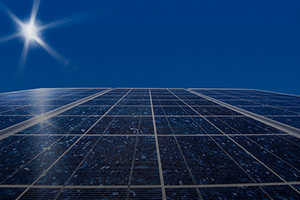Biosolar Leaf

A new technology that converts solar energy into food is aimed at developing a sustainable food supply while cleaning up the environment. The panels, which look similar to solar panels, are covered with algae that pull carbon dioxide out of the air and produce fresh oxygen. The microscopic organisms are so efficient that 1 acre of panels can produce 100 times more oxygen than the equivalent area planted in trees.
In addition, as the algae grow, they can be harvested to replace synthetic food additives with ones that are produced naturally and organically. Micro plants like blue-green algae and plankton are excellent sources of phytonutrients and also provide proteins, vitamins, antioxidants, minerals and essential fatty acids. Although microalgae are already being used in food, this proprietary process is less expensive and more scalable.
The Biosolar Leaf system is an excellent alternative in areas where the soil cannot support traditional farming. But the panels can also be placed on rooftops or the sides of buildings, making them adaptable for urban areas as well. The company has even built a chandelier using the technology to trap carbon dioxide and produce oxygen indoors. An outdoor pilot of their system is scheduled for installation at Imperial College in London.
For information: Arborea Ltd., Translation & Innovation HUB, 8 Wood Lane, W12 0BZ, London, United Kingdom; email: info@arborea.io; website: http://arborea.io/ or https://www.imperial.ac.uk/news/191026/worlds-first-biosolar-leaf-tackle-pollution/